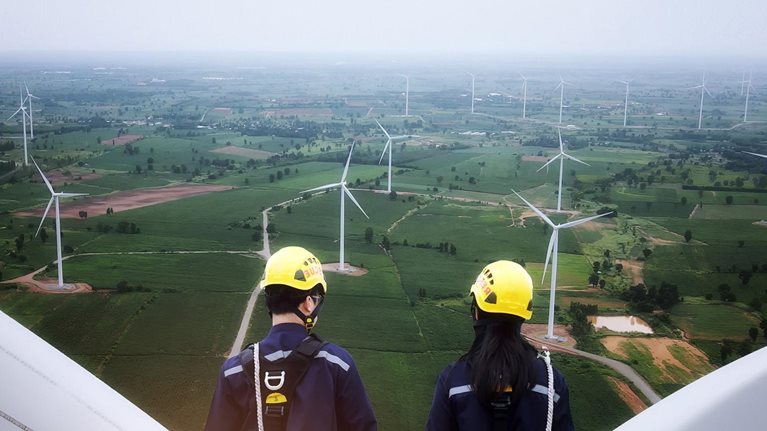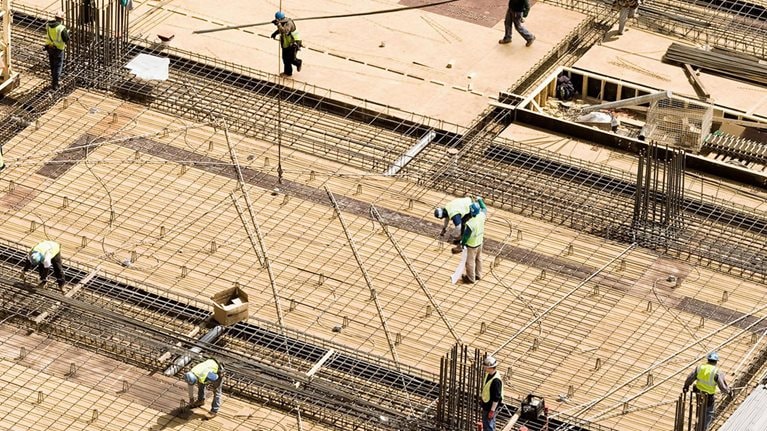For future infrastructure projects to meet net-zero targets, the global industry will have to future-proof supply chains to withstand unanticipated shocks, including pandemics, labor and materials shortages, regional conflicts, reshoring businesses, technology shifts, monetary policy shifts, and changing regulations. Better situational intelligence will help leaders strategically match the supply and demand for all required resources for projects while improving the scale and pace of project delivery.
McKinsey’s Tony Hansen recently spoke with Jennifer Lin, Trimble’s chief platform officer, about the role technology will play in helping organizations meet this goal.
Tony Hansen: Technology can produce real, discrete improvements in the way we work. It can help remove many “frictional inefficiencies” that are systemic, such as communicating changes quickly, and allow us to make calculations that were previously impossible or impractical. With this in mind, how can technology enable resilient supply chains?
Jennifer Lin: Technology not only transforms how supply chains work; it also drives business resiliency in several ways. Online data sharing creates new levels of transparency between producers, operators, and customers, opening up possibilities for better team coordination. Connected platforms are instrumental in delivering smarter, greener systems that are more adaptable. By connecting people and data, digital technologies also enable more efficient workflows and faster execution.
Looking specifically at transportation and logistics, smarter workflows help shippers and carriers adjust to the dynamic nature of their markets. For example, a connected supply chain allows shippers and carriers to collaborate and improve utilization of the resources on hand. This, in turn, optimizes vehicle routing, scheduling, and even procurement, which creates a more efficient system across the combined operation.
The connected supply chain also reduces costs and leads to more sustainable operations. For example, we estimate that just a 1 percent improvement in truck capacity utilization across North America would be worth seven billion fewer “empty miles” annually, saving approximately $8.4 billion and removing 11 billion pounds of carbon dioxide emissions from the environment.
Last, advances in data analytics make it possible to analyze the massive amounts of data coming out of the supply chain and dynamically adjust operations accordingly, allowing the supply chain to become more flexible, efficient, and profitable. For instance, when matching carrier capacity to shipper needs, companies could avoid disruptions by using analytics to dispatch carriers with excess capacity to a shipper that needs freight moved.
Tony Hansen: In what ways can technology adoption help the infrastructure industry meet net-zero requirements?
Jennifer Lin: While there is a lot we must do to reach net-zero emissions, reducing waste in labor, equipment, and materials during the construction process can lower global carbon emissions substantially.
Architects, engineers, and designers are now able to estimate embodied carbon while in the process of exploring design options. Out in the field, visualization tools such as mixed reality make it easier to identify construction errors that would produce negative downstream impacts early enough to prevent such effects.
On the work site, just-in-time material procurement aligns raw-material orders with construction schedules to reduce excessive materials, and precision machine control improves the accuracy and efficiency of heavy earthmoving equipment so that jobs can be completed in less time, using less fuel.

Voices on Infrastructure: Building resilient infrastructure supply chains
Tony Hansen: What role will technology play in the successful delivery of infrastructure projects?
Jennifer Lin: Despite significant technological advances, US infrastructure is often better known for its high costs and missed timelines than for its technological prowess or efficiency. The Bipartisan Infrastructure Law creates a tremendous opportunity for America to regain an enviable status among the world’s infrastructure leaders, but history shows us that funding alone won’t ensure success. America spends more per mile on roads than any other country that discloses spending but ranks 13th globally for infrastructure quality.
Digital construction technologies have been proven to help city, county, and state governments shave weeks—or even months—off project timelines and have been used to better manage labor shortages. When implemented by state departments of transportation and other asset owners, digital tools and processes help ensure infrastructure is designed and built faster, cheaper, and more efficiently.
Digital project delivery unlocks the ability for stakeholders to access and use data when they need it. Although stand-alone digital solutions can quickly transform a single workflow, deploying them in isolation often results in a network of disconnected teams producing silos of disparate data. This fragmentation of effort strips away gains faster than individual teams can make them. Ensuring the right data is accessible to the right people at the right time can increase transparency, drive new partnerships and collaboration, improve construction workflows, shorten project life cycles, and lead to better outcomes.
Tony Hansen: What recent advancements in technology make you excited about the potential for change in the built environment?
Jennifer Lin: The rate of technology innovation and its potential to transform the built environment are unprecedented. I’ll touch on a couple things that I’m most excited to see growing in adoption. First is the continued shift to constructible design-build project delivery. Labor-intensive workflows and siloed teams are being replaced with more efficient communication across humans and machines. Outcome-focused planning and collaboration among all stakeholders is happening early in the project life cycle so that stakeholders are aligned long before construction begins.
Second, constructible models, collaboration platforms, and construction management tools are improving intelligent automation and removing the potential for human error while increasing accurate execution at every project stage. Working with a shared model, stakeholders are effectively creating a continuously updated single source of truth about the project that not only ensures transparency across owners, engineers, and contractors but also helps improve the longevity of an operational asset for more predictive maintenance.
Tony Hansen: What needs to change in talent development and retention to mitigate the skill and labor constraints across the value chain? How can technology help?
Jennifer Lin: The construction industry’s labor shortage, first prompted by the loss of 600,000 skilled workers during the 2008 recession, has been exacerbated by retiring baby boomers and the COVID-19 pandemic. As the Bipartisan Infrastructure Law creates new demand for workers, the pressure is on to cultivate the next generation of skilled workers in construction and the public sector.
Attracting young people to traditional industries remains an uphill battle, but the increased use of tech is creating new channels of skilled talent. Academic outreach programs have proved successful in educating young people about the professional, financial, and personal merits of a career in construction and are overturning misconceptions that dissuade good talent. Millennials and Gen Zers want to do work that they find interesting and meaningful, but when envisioning careers in construction, they don’t anticipate opportunities to work with the latest advances in technology. Highlighting the use of emerging technologies can help attract digital natives.
Tony Hansen: How is Trimble addressing the need to attract, train, and retain the talent required to lead in this industry?
Jennifer Lin: Today’s construction jobs need workers with a combination of domain knowledge and technical skills. At Trimble, we’re partnering with academic institutions via hands-on engagement with two outreach programs: Trimble Technology Labs and the Visiting Professionals Program.
Trimble Technology Labs provides students with the latest technology solutions used by today’s leading architects, engineers, construction managers, farmers, and surveying professionals. There are 28 labs across 16 countries on five continents. The Visiting Professionals Program brings construction industry leaders into university classrooms to engage with students through workshops, lectures, tech demos, and hands-on training.
This article is part of Global Infrastructure Initiative’s Voices on Infrastructure.
Comments and opinions expressed by interviewees are their own and do not represent or reflect the opinions, policies, or positions of McKinsey & Company or have its endorsement.


